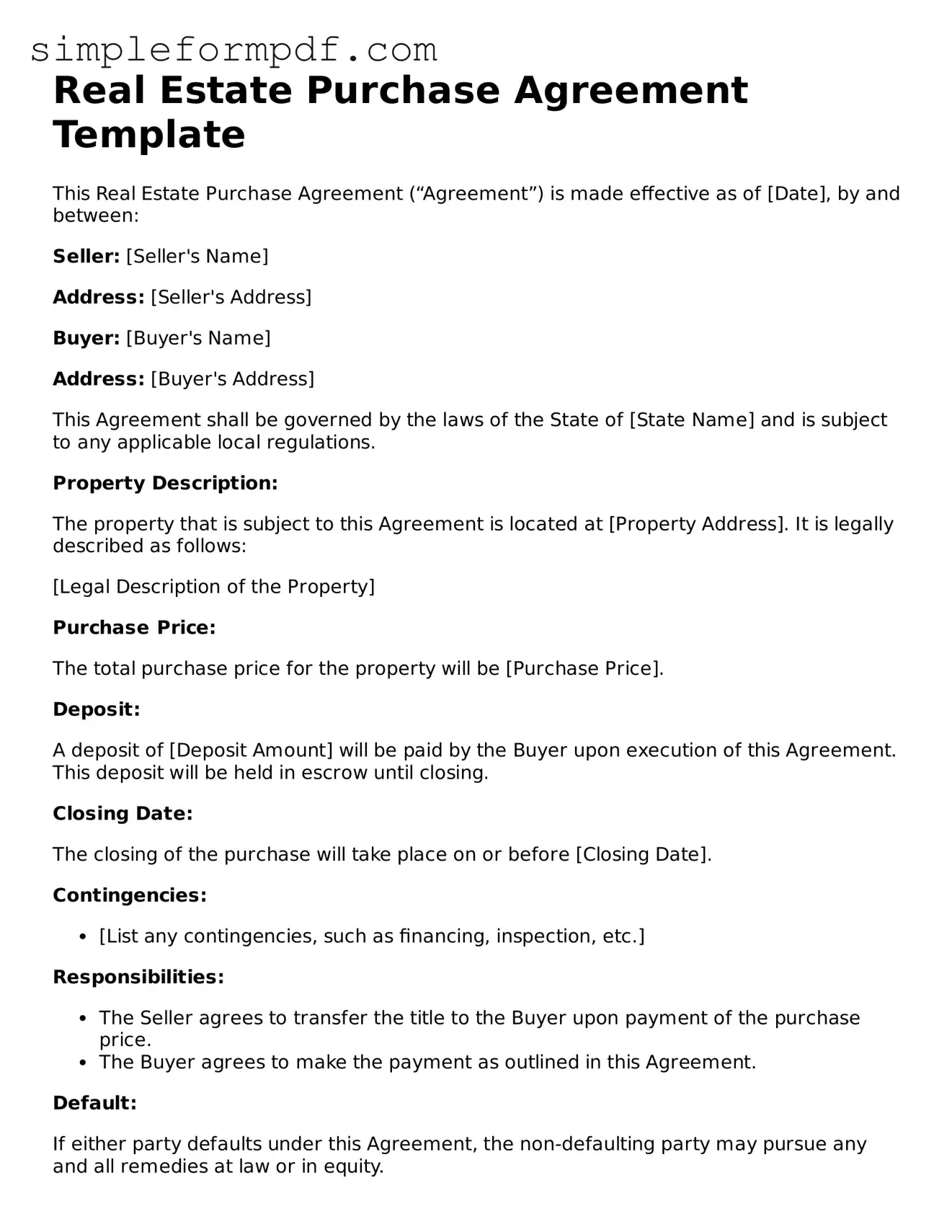Real Estate Purchase Agreement Template
This Real Estate Purchase Agreement (“Agreement”) is made effective as of [Date], by and between:
Seller: [Seller's Name]
Address: [Seller's Address]
Buyer: [Buyer's Name]
Address: [Buyer's Address]
This Agreement shall be governed by the laws of the State of [State Name] and is subject to any applicable local regulations.
Property Description:
The property that is subject to this Agreement is located at [Property Address]. It is legally described as follows:
[Legal Description of the Property]
Purchase Price:
The total purchase price for the property will be [Purchase Price].
Deposit:
A deposit of [Deposit Amount] will be paid by the Buyer upon execution of this Agreement. This deposit will be held in escrow until closing.
Closing Date:
The closing of the purchase will take place on or before [Closing Date].
Contingencies:
- [List any contingencies, such as financing, inspection, etc.]
Responsibilities:
- The Seller agrees to transfer the title to the Buyer upon payment of the purchase price.
- The Buyer agrees to make the payment as outlined in this Agreement.
Default:
If either party defaults under this Agreement, the non-defaulting party may pursue any and all remedies at law or in equity.
Signatures:
IN WITNESS WHEREOF, the parties hereto have executed this Agreement as of the day and year first written above.
Seller’s Signature: ________________________ Date: ____________
Buyer’s Signature: ________________________ Date: ____________
